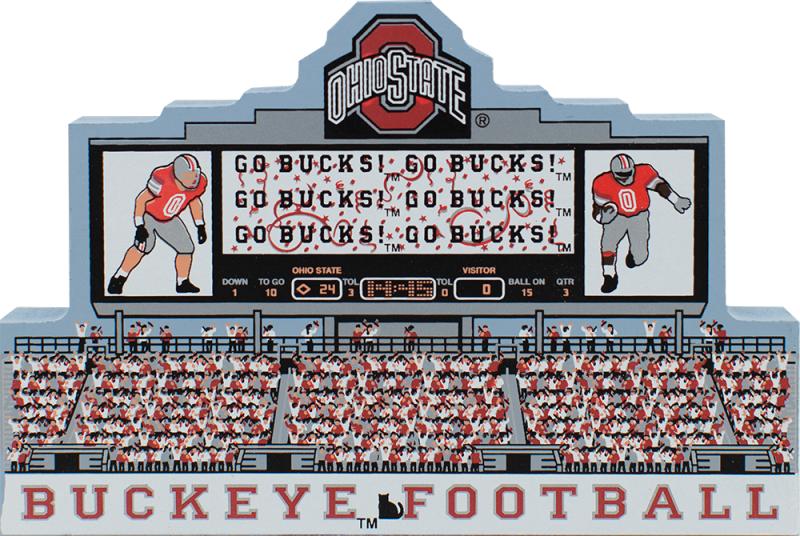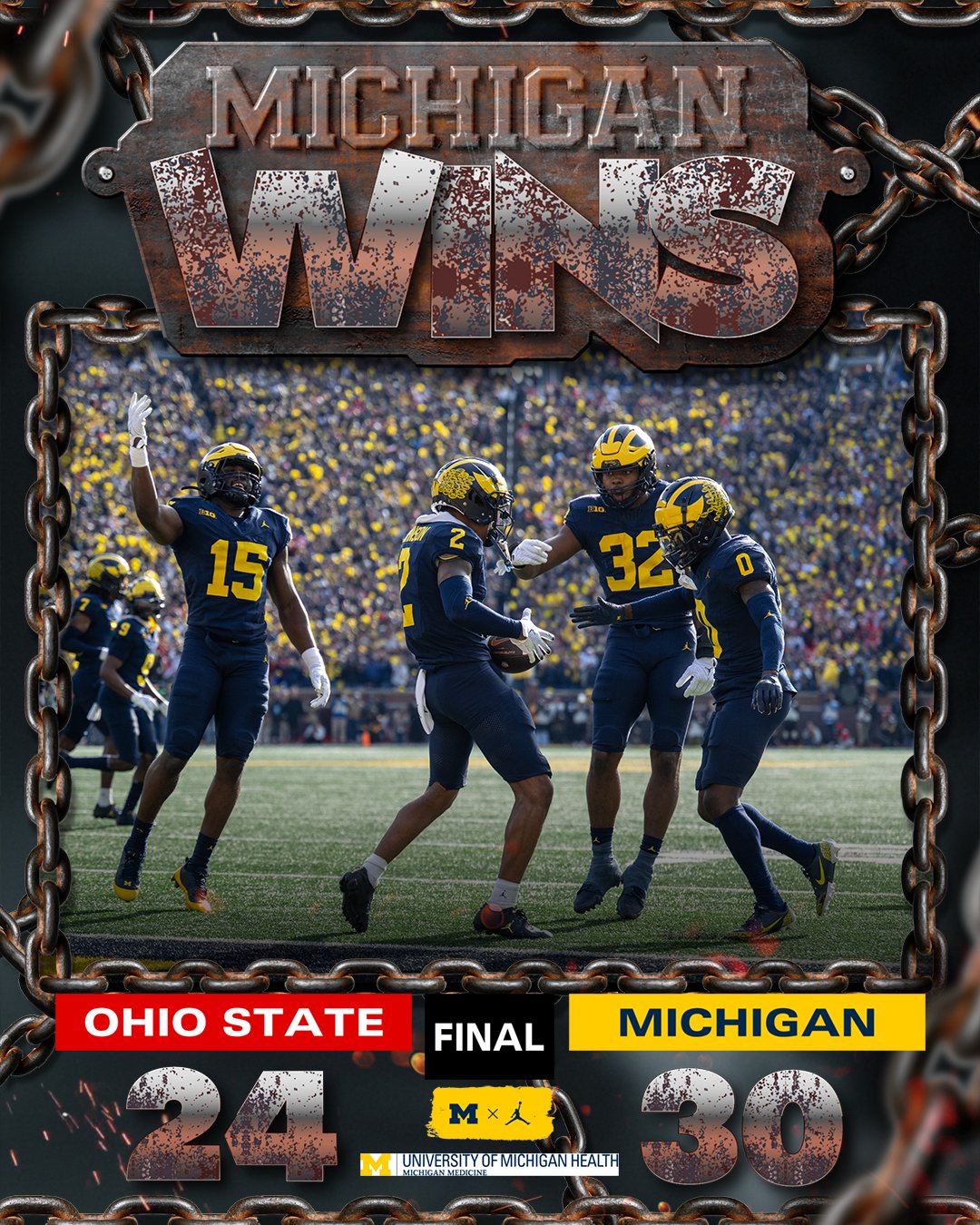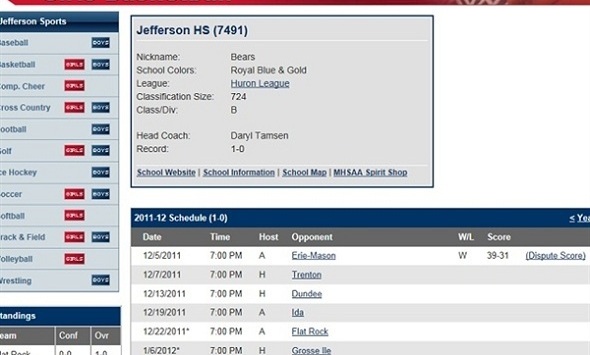Topic league of legends scoreboard: Discover the dynamic world of League of Legends with our comprehensive guide to scoreboards, offering real-time match insights, player stats, and strategic analysis for esports enthusiasts and gamers alike.
Table of Content
- How can I view the scoreboard in League of Legends?
- Understanding the League of Legends Scoreboard
- Recent Changes and Updates to Scoreboard UI
- Scoreboard Features and Player Statistics
- Impact of Scoreboard on Gameplay and Strategy
- Comparing Scoreboards Across Different Tournaments
- YOUTUBE: RIOT FIXED THE SCOREBOARD - League of Legends
- Exploring Scoreboard Functionality in Major Leagues
- Scoreboard Analysis in Professional Matches
- Interactive Elements of the League of Legends Scoreboard
- Future Developments and Predictions for Scoreboard Enhancements
- Community Feedback and Scoreboard Customization Options
How can I view the scoreboard in League of Legends?
To view the scoreboard in League of Legends, follow these steps:
- Open the League of Legends game client on your computer.
- Log in to your account if you haven\'t already.
- Once logged in, click on the \"Play\" button located at the top of the client screen.
- In the play menu, you will see various game modes available. Select the game mode you want to play and click on it.
- After selecting the game mode, you will be matched with other players and enter the champion select screen.
- Pick your desired champion and select your preferred roles.
- Once all players have chosen their champions, the loading screen will appear.
- After the loading screen completes, the game will start, and you will be on the Summoner\'s Rift.
- During the game, press the \"Tab\" key on your keyboard to bring up the scoreboard.
- The scoreboard will display various information such as your team\'s and enemy team\'s champions, kills, deaths, assists, gold, items, and other important stats.
That\'s how you can view the scoreboard in League of Legends! Remember that the \"Tab\" key is the default keybinding to bring up the scoreboard, but you can change it in the game settings if needed.
READ MORE:
Understanding the League of Legends Scoreboard
The League of Legends (LoL) scoreboard is a vital tool for players and spectators, providing real-time insights into the ongoing match. It offers a comprehensive overview of key game statistics, helping to track progress, strategize, and analyze player performance. Key elements include:
- Player Stats: Detailed information on each player\"s performance, such as kills, deaths, assists, gold earned, and more.
- Team Statistics: Collective metrics like total team kills, objectives (like dragons, barons, towers) taken, and gold difference.
- Live Match Timings: The scoreboard displays the current game time, providing context to the pace and state of the game.
- Itemization: Viewers can see the items each player has purchased, offering insights into their strategic choices.
- Match History and Progress: For ongoing tournaments or leagues, the scoreboard may display previous match results and standings, giving a broader view of the team\"s performance in the event.
- Real-Time Updates: The scoreboard updates dynamically, reflecting the live state of the match.
Understanding the intricacies of the scoreboard in League of Legends enriches the viewing experience and helps players make informed decisions during gameplay. It\"s a blend of real-time data analytics and strategic overview that is crucial for both players and fans of the esport.
Recent Changes and Updates to Scoreboard UI
The League of Legends scoreboard underwent significant changes in recent patches, notably in Patch 12.9 and subsequent updates. These changes were part of Riot Games\" efforts to modernize the game\"s client. One of the major updates in Patch 12.9 included a complete overhaul of the post-game screen and the scoreboard. This change aimed to provide a fresher, more modern look to the game interface.
However, the updates received a mixed reaction from the player community. While some players appreciated the modernized look, others criticized the new design, with concerns about its resemblance to mobile game interfaces and issues with the visibility of certain elements like the chat and damage graph. The feedback was divided, with some players expressing satisfaction with the new design, praising its updated, cleaner look, while others were less favorable, focusing on issues like change resistance and usability concerns.
In response to community feedback, Riot Games continued to tweak the scoreboard UI. One of the notable changes in Patch 13.9 included reintroducing the ability to see if a player is absent directly on the scoreboard, a feature previously removed. Additionally, Riot Games adjusted the placement of the self-mute and mute all buttons to address issues related to muting functionalities. The developers also made it easier to mute other players, potentially through the introduction of hotkeys.
The changes to the League of Legends scoreboard illustrate the dynamic nature of game development, where player feedback plays a crucial role in shaping game features. Riot Games\" commitment to updating and refining the scoreboard UI demonstrates their dedication to improving player experience and addressing community concerns.

Scoreboard Features and Player Statistics
The League of Legends scoreboard is a comprehensive tool that provides a wealth of information to players, aiding in strategic decisions and performance analysis. This scoreboard includes several features and statistics essential for both casual and competitive play.
- Player Performance Metrics: The scoreboard provides detailed statistics on player performance, including kill/death/assist (KDA) ratios, total damage dealt, and gold earned. These metrics are vital for assessing individual and team performance.
- Champion Statistics: Information on champion picks, win rates, and ban rates is available, offering insights into the current meta and popular strategies.
- Match Analysis Tools: Websites like League of Graphs and OP.GG provide in-depth analysis tools for players to review their performance in various match types, including ranked and normal games.
- Global Efficiency Insights: Some platforms offer insights based on global player activity, highlighting the win and pick percentages of champions, which can be used to gauge the effectiveness of specific champions in the current meta.
- Real-time Tracking: Certain applications offer in-game, real-time tracking of League of Legends stats, helping players monitor their performance as the match progresses.
- Role-Specific Metrics: The scoreboard also tailors information based on player roles, providing relevant statistics like farming efficiency for laners or counterjungling metrics for junglers.
In addition to these features, professional gaming statistics platforms like Games of Legends offer advanced tools and data for analyzing professional matches, giving insights into high-level play and trends in professional tournaments.
Overall, the League of Legends scoreboard and associated platforms provide an extensive array of data and tools that are crucial for players looking to improve their gameplay, understand the evolving meta, and analyze both their own and others\" performances in a detailed manner.
Impact of Scoreboard on Gameplay and Strategy
The scoreboard in League of Legends significantly influences gameplay and strategy, affecting everything from individual decision-making to team dynamics. Players utilize the scoreboard to gauge their performance, strategize, and adapt their playstyle in real-time.
- Individual Performance Analysis: Players use the scoreboard to assess personal metrics like KDA ratios, CS (Creep Score), and gold differentials. This self-analysis helps in identifying areas for improvement, like farming efficiency or participation in team fights.
- Team Coordination: Communication and teamwork, crucial elements in LoL, are partly based on information from the scoreboard. It assists in understanding the overall team strength and weaknesses, facilitating better coordination and shot-calling.
- Adaptation to Opponents: Understanding enemy champion strengths, item builds, and current power levels through the scoreboard enables players to adapt strategies mid-game. This could mean altering item builds, focusing on different objectives, or changing lane strategies.
- Strategic Decisions: The visibility of metrics like negative kill bounty influences strategic gameplay. Players make informed decisions about target selection and risk evaluation based on potential rewards for successful kills.
- Learning and Improvement: For lower-ranked players, the scoreboard is a learning tool. It helps them understand the game\"s dynamics and the impact of optimal play, even if it varies based on situations and team compositions.
- Meta-Game Analysis: In professional play, analyzing key metrics from the scoreboard provides insights into the competitive landscape, helping teams and players to develop high-level strategies and understand trends in professional tournaments.
In conclusion, the League of Legends scoreboard is not just a tool for tracking scores; it\"s an integral part of the strategic layer of the game, influencing decisions, learning, and the overall competitive experience.

_HOOK_
Comparing Scoreboards Across Different Tournaments
League of Legends tournaments vary widely in terms of scale, audience, and regional focus. Each tournament brings its unique flair to the game, reflected in the differences in scoreboards. Comparing scoreboards across these tournaments provides fascinating insights into how regional and tournament-level differences impact the game\"s presentation and strategy.
- Regional Variations: Tournaments like the LCK in South Korea, LPL in China, and LEC in Europe may have subtle differences in their scoreboard layouts and statistics displayed. These variations cater to the preferences of local audiences and the specific strategic focuses of the regions.
- Professional vs. Semi-Professional Tournaments: Higher-tier tournaments like the LCK and LEC often have more sophisticated scoreboards with detailed statistics, given the professional level of play. In contrast, semi-professional leagues might present a more simplified scoreboard focusing on the essential metrics.
- Academy and Development Leagues: These leagues, serving as breeding grounds for future professional players, might have scoreboards focusing more on individual player performance to highlight upcoming talents.
- Special Event Tournaments: Events like the Demacia Cup or Mid-Season Invitational may introduce unique scoreboard elements reflecting the event\"s theme or special rules.
- Format and Structure: The scoreboard design can also vary depending on the tournament format – whether it\"s a best-of-series, single round-robin, or double elimination. This affects how information like match wins, series scores, and player stats are displayed.
- Technological Advancements: As technology evolves, so do scoreboards. Newer tournaments might incorporate advanced analytics and real-time stats more prominently compared to older tournaments.
Ultimately, these differences in scoreboards across various League of Legends tournaments not only reflect the diversity in the game\"s global reach but also cater to different audience preferences and strategic emphases in different regions of the world.
RIOT FIXED THE SCOREBOARD - League of Legends
Update: \"Stay informed and up-to-date with the latest information and improvements in our new update video! Discover exciting features and enhancements that will enhance your experience. Click to watch now!\" Loading: \"Curious to see what\'s in store? Get ready for an exciting reveal as we showcase a sneak peek of what\'s loading up next! Click to watch the video and be amazed!\"
League of Legends Client Update 2022 Loading Screen Scoreboard
Welcome on my channel for a new League of legends video from Season 12 League of Legends Client Update 2022 | Loading ...
Exploring Scoreboard Functionality in Major Leagues
The scoreboards in major League of Legends leagues, such as the LEC, LCS, LCK, and LPL, are sophisticated systems that provide detailed information about the game. They are designed to cater to both the audience and players, offering in-depth insights into the game\"s progress and player performances.
- Comprehensive Metrics: Major league scoreboards display a variety of metrics including kill/death/assist ratios, gold earned, and objectives secured (like towers and dragons). This information is crucial for viewers to understand the game\"s state and for players to strategize in real-time.
- Real-Time Updates: The scoreboards in these leagues update in real-time, ensuring that viewers and players have the most current information about the game\"s status.
- Region-Specific Features: Different leagues may have unique features in their scoreboards tailored to regional preferences. For instance, some leagues might emphasize certain stats over others based on what their audience values most.
- Player-Specific Stats: Scoreboards often highlight individual player statistics, like champion-specific performances, allowing viewers to track the progress and impact of their favorite players.
- Technological Integration: Advanced tech integrations, such as real-time tracking and analysis tools, are a part of these scoreboards, offering a more interactive and engaging experience for the viewers.
- Global and Regional Rankings: Many scoreboards also feature global and regional rankings, giving a broader context to the game by showing where teams and players stand in comparison to others worldwide.
Overall, the scoreboard functionality in major League of Legends leagues is an essential aspect of the viewing experience, providing a comprehensive and dynamic overview of the game\"s progression and player performances.
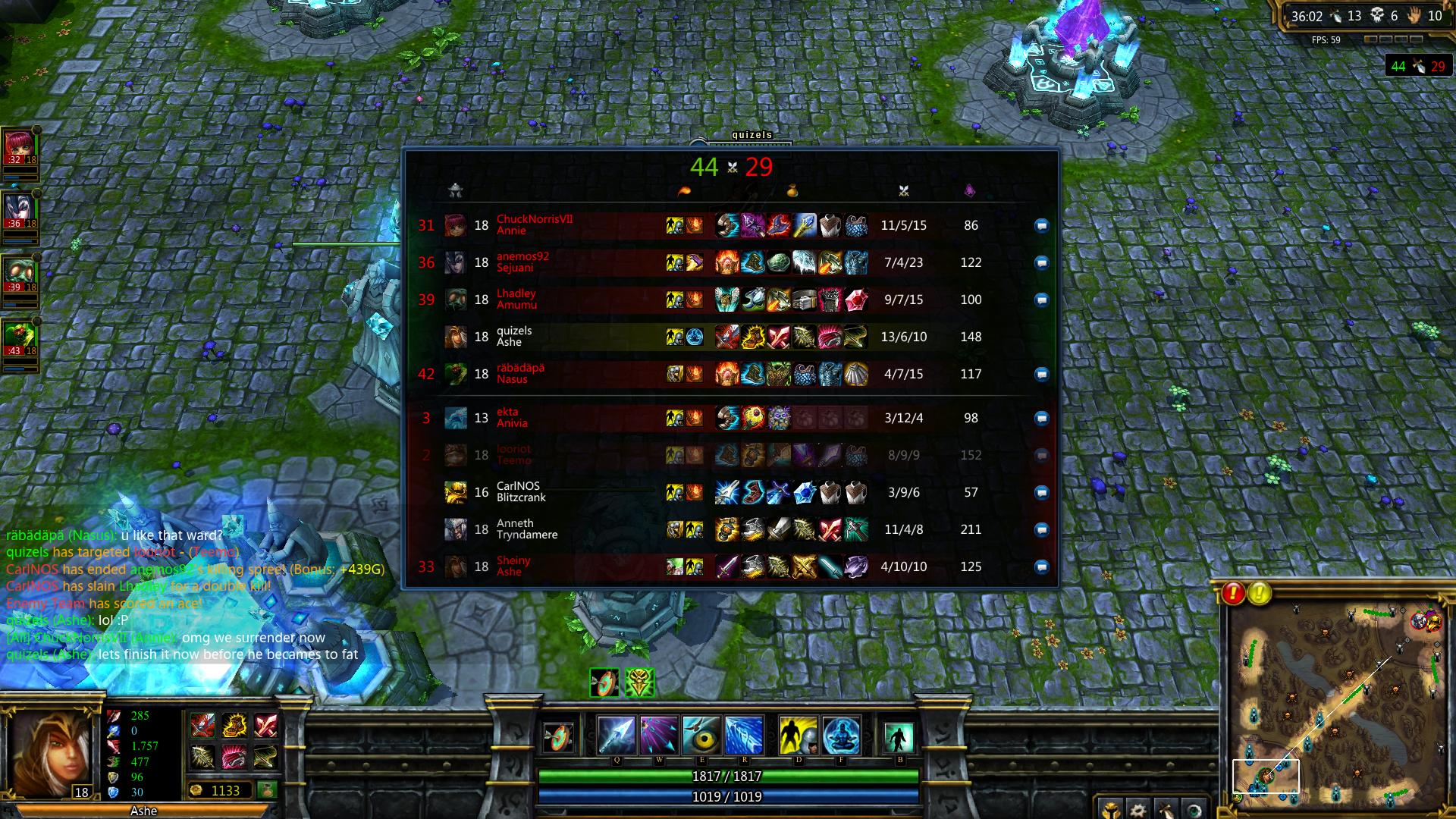
Scoreboard Analysis in Professional Matches
In professional League of Legends matches, the scoreboard is a critical tool for both players and analysts. It provides a wealth of data that helps in understanding the game\"s progression, player strategies, and overall team performance.
- Detailed Player Metrics: Professional scoreboards offer in-depth statistics for each player, including kills, deaths, assists, creep score, and gold earned. These metrics are crucial for assessing individual performances and identifying key players in a match.
- Team Objective Control: The scoreboard displays information about team objectives such as towers taken, dragons and barons slain. This data is essential to gauge which team has map control and objective dominance.
- Global Efficiency: Websites like Tracker.gg provide insights into global efficiency for champions, showing win and pick percentages that can reflect the meta and influence pick and ban phases in pro play.
- Regional Differences: Scoreboards can vary slightly in different regional leagues, such as the LEC, LCS, LCK, and LPL, reflecting regional preferences and strategic focuses.
- Real-Time Analytics: Modern scoreboards in professional leagues are integrated with real-time tracking solutions, enhancing the analytical depth during live matches.
- Comparative Analysis: Analyst tools, as seen on platforms like Games of Legends, provide comparative statistics between teams and players, offering a deeper understanding of the competitive landscape.
Overall, scoreboard analysis in professional League of Legends matches is integral to understanding the game at a higher level. It offers a comprehensive view of both the macro and micro aspects of the game, influencing strategies and decisions in the professional arena.

Interactive Elements of the League of Legends Scoreboard
The League of Legends (LoL) scoreboard has evolved to include various interactive elements that enhance the player and spectator experience. These elements are integral to understanding the game\"s dynamics and tracking progress in real-time.
- Champion Overview: The scoreboard provides detailed information on each champion, including their abilities, stats, and items. This helps players quickly assess their own and their opponents\" strengths and weaknesses.
- Real-Time Tracking: Certain platforms, like League of Legends Tracker, offer real-time tracking solutions. These systems provide updated statistics during the game, helping players to adjust their strategies based on current performance metrics.
- Global Champion Efficiency: Tools such as those found on tracker.gg offer insights into the global efficiency of champions based on recent player activities. This information includes win and pick percentages, aiding players in making informed decisions during champion selection and gameplay.
- Team Composition Insights: The scoreboard allows players to understand team compositions better, providing insights into how well-balanced a team is regarding roles and champion types.
- Match History and Performance Analysis: Platforms like LeagueOfGraphs and OP.GG offer players the ability to analyze match history and individual performance, giving valuable insights for future games.
- Region-Specific Statistics: Scoreboard services cater to various regions, offering tailored information that reflects regional preferences and playstyles.
The interactive elements of the League of Legends scoreboard are crucial for both casual and competitive players, offering a depth of information that can significantly influence gameplay decisions and strategies.
Future Developments and Predictions for Scoreboard Enhancements
As League of Legends continues to evolve, the scoreboard is also undergoing transformations. Recent updates have sparked a mix of reactions from the player base, highlighting the challenge of modernizing the interface while retaining functional clarity.
- Upcoming revisions may address community feedback, focusing on improving readability and minimizing elements that obscure essential information like chat.
- Future enhancements could include more interactive elements, allowing players to gain deeper insights into their gameplay and performance metrics.
- Integration of advanced statistics and real-time data analytics might be explored to provide a more comprehensive and dynamic gaming experience.
Overall, the goal is to create a scoreboard that not only looks visually appealing but also contributes positively to the overall strategic and competitive aspects of the game.
_HOOK_
READ MORE:
Community Feedback and Scoreboard Customization Options
Riot Games has introduced significant updates to the League of Legends client, prioritizing player personalization and detailed performance analytics. These enhancements reflect the evolving needs and preferences of the League of Legends community.
- The new League Identity customization system allows players to select unique borders, icons, and other elements, tailoring their in-game profiles to reflect their personal style and achievements.
- Redesigns of the lobby, loading screen, and end-of-game interfaces ensure a modern, streamlined experience while highlighting individual player identities.
- The endgame screen now provides more comprehensive data, including LP, experience, mastery, completed challenges, and a detailed game summary. This allows players to better understand their performance and progression after each match.
- Enhancements to Ranked Emblems and the introduction of Identity Crystals and Titles offer new ways for players to display their skills and accomplishments.
- Feedback from the community has been instrumental in guiding these updates, ensuring that changes enhance both the functionality and aesthetic appeal of the game.
These developments signify Riot Games\" dedication to evolving the game in line with player feedback, balancing aesthetic improvements with practical, informative features.
Discover the dynamic world of League of Legends scoreboards, where cutting-edge updates and community-driven customization converge to enhance your gaming strategy and experience. Join us in exploring this ever-evolving feature!




